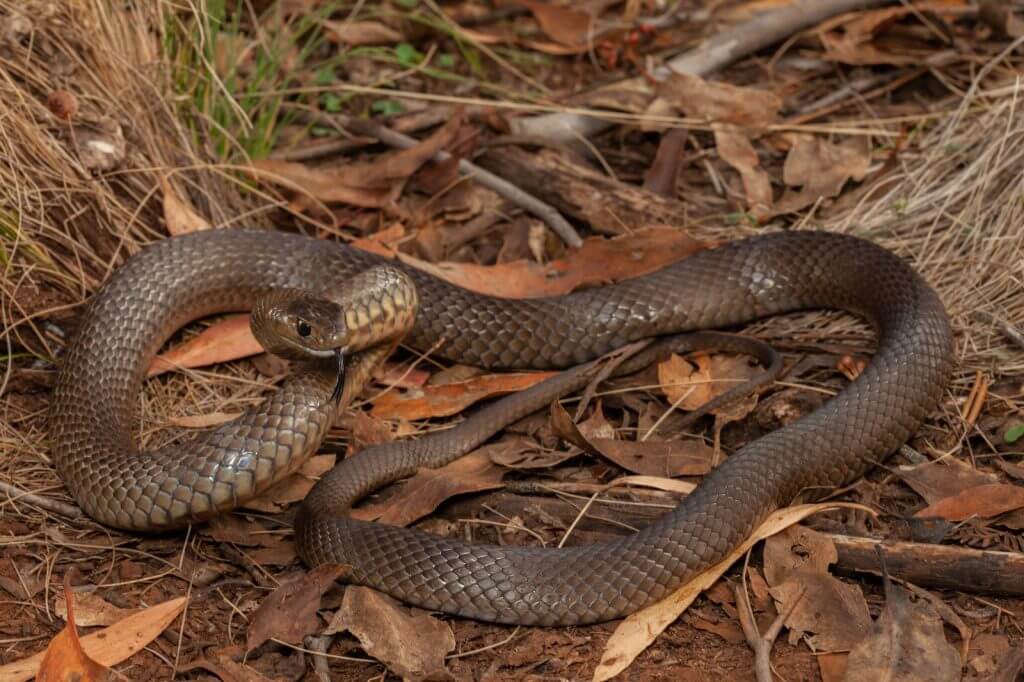Australia is home to some of the world’s most venomous snakes, making it important for hikers and bushwalkers to know how to stay safe when encountering these reptiles in the wild. In this post, we’ll explore the basics of dealing with snakes on bushwalks in Australia, including how to identify dangerous species, what to do if you encounter one, and how to avoid snake bites.
Identifying Dangerous Snakes
The first step in dealing with snakes on bushwalks is to know how to identify the dangerous species. In Australia, the most venomous snakes include the Eastern Brown Snake, the Red-Bellied Black Snake, the Tiger Snake, and the Death Adder. These snakes are often brown, black, or grey in colour and can be easily distinguished by their distinct patterns and scales. You can find a guide with images here of NSW snakes. It is best to treat all snakes you encounter as potentially venomous to be safe.

What to Do If You Encounter a Snake
If you encounter a snake on a bushwalk, it’s important to remain calm and keep a safe distance. Snakes are generally shy creatures and will only attack if they feel threatened. Try to slowly and calmly back away from the snake, giving it plenty of space to escape. If the snake is blocking your path, look for another route around it, or wait until it moves on before continuing your hike.
Avoiding Snake Bites
The best way to deal with snakes on bushwalks is to avoid being bitten in the first place. To reduce the risk of snake bites, take the following precautions:
- Wear appropriate clothing: When hiking, wear long pants with gators and sturdy shoes to help protect your legs and feet from snake bites.
- Stick to the trail: Snakes are often found in tall grass or along the edge of the trail, so stick to the path to reduce your risk of encountering one.
- Watch your step: Snakes are often camouflaged, so take your time and watch where you step when walking through tall grass or other areas where snakes may be hiding.
- Make noise: Snakes are often startled by loud noise and vibrations in the ground, so make a lot of noise as you hike to alert any nearby snakes to your presence and give them time to escape.
If you are bitten by a snake, it’s important to seek medical attention as soon as possible. In the meantime, take the following steps to reduce the risk of serious injury:
- Remain calm: It’s important to remain calm and not panic, as this can increase the flow of venom through your body.
- Keep the affected limb immobilized: To reduce the spread of venom, keep the affected limb immobilised and at or below the level of your heart.
- Seek medical attention: Call emergency services or seek medical attention as soon as possible. Be sure to tell the medical professional what type of snake you think you were bitten by and try to remember the colour and pattern of the snake.
In conclusion, dealing with snakes on bushwalks in Australia requires a combination of knowledge, caution, and common sense. By familiarizing yourself with the dangerous species, knowing what to do if you encounter one, taking precautions to avoid snake bites, and seeking medical attention if bitten, you can reduce your risk of harm and enjoy a safe and successful hike.